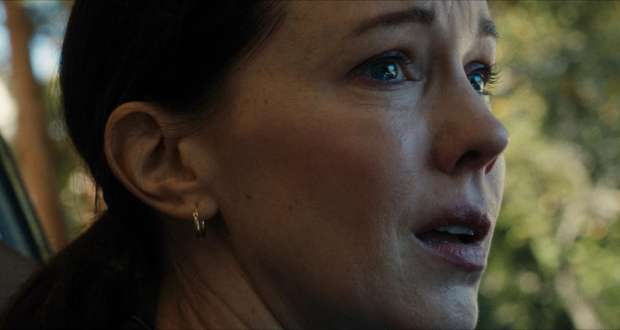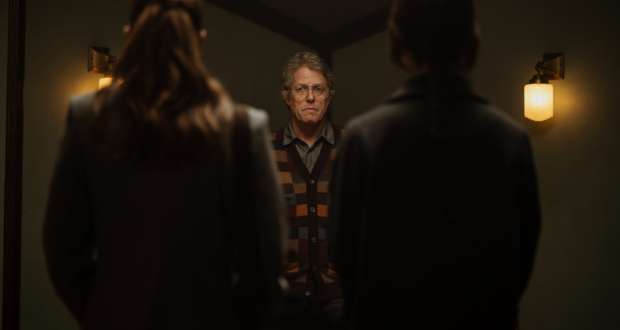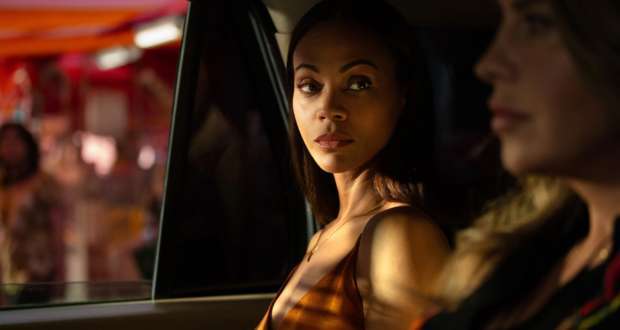The Velvet Underground
Todd Haynes, USA, 110 min.
” Austin Film Society will present a Doc Days Opening Night (Oct. 14) presentation of Todd Haynes’ The Velvet Underground: a look at the cultural, social, musical, artistic and cinematic forces that created one of the world’s most enduring bands. Far from your typical rock documentary, Haynes goes deep into the source inspiration of the sounds The Velvets would be known for, while tracking and connecting the band’s rise with and through New York’s independent and experimental film scene.
Haynes weaves a cinematic portrait of a band that was essentially birthed and defined through cinematic ideas and images, using footage from the films of Andy Warhol, Jonas Mekas, Maya Deren, Kenneth Anger, and Shirley Clarke, among others; and interviews past and present with those who experienced the brief reign of The Velvet Underground.”
According to Wikipedia, “Rolling Stones” named the “most influential bands of the Sixties” and the bands ranked first, second and third were the Beatles, James Brown (and the Famous Flames), and the Velvet Underground.
As a sixties music afficionado, an avid reader of “Rolling Stone,” and someone who brought back a British record release of “Sergeant Pepper’s Lonely Hearts Club Band” from my time as an exchange student abroad, I’m surprised I was not more “in” to The Velvet Underground in my 60s youth. In England and Europe I took in James Brown and the Famous Flames in Paris (1967) and saw the Beatles live at the San Francisco Cow Palace (1965). When in England I attended a concert at the Savoy Hotel in Birmingham, with a light show, at which an unknown band that had no record contract (yet) appeared. That band was Pink Floyd.
So, how did I miss out on being a fan of the Velvet Underground in their hey-day?
Now that I’ve seen Todd Haynes compilation of old photos and interviews with original members of the group and heard some of the songs, I think I know why I didn’t jump on the Velvet Underground bandwagon back then. They were hugely experimental and are credited with giving birth to the punk movement and the New Wave movement many years later. With Welsh band member John Cale (who is interviewed prominently in the documentary) playing the viola and supposedly obsessed with sounds that are droning noises (like a refrigerator humming), that doesn’t sound much like the Beatles or James Brown. It didn’t, to me. Then or now. Andy Warhol, (the V.U.’s promoter and manager in 1966), was a visionary about film and taped nearly everything that happened at the Factory. Therefore, it is supremely ironic that barely any concert footage of the band in concert exists. This documentary consists largely of Warhol films of the people at the Factory, snapshots from other bands and followers of the band (then and now), and interviews with 2 members of the original group, often presented in a split screen fashion. (b
To show how film was supposed to have merged with music (years before it did), some YouTube links like Nico’s singing with Warhol’s art in the background, would have made this documentary more worthwhile, so I have included a few for you (below).
I did not become very aware of the Velvet Underground until David Letterman featured Lou Reed on his Late Night talk show many years later. Since Lou Reed has been dead since 2013, these appearances happened 9 or 10 years ago. I remember that Reed was always held forth by Letterman as the King of Cool, sitting in with Paul Schaffer and the Late Night Orchestra. Lou Reed was inducted into the Rock & Roll Hall of Fame not once, but two times, once as a member of the Velvet Underground and once for his own music, which continued for many years after the break-up of the group. His big hit was “Walk on the Wild Side.” (clip below)
“Walk on the Wild Side” was written by Reed for use in the film version of Nelson Algren’s book of the same name. That book and movie have a special place in my heart. I sat across from Nelson Algren at the Englert Theater in Iowa City (Iowa) watching Nelson Algren watch the Jane Fonda/Laurence Harvey movie version of his work. I was glued to watching the author watch it. The song played over the film credits, if I remember correctly, and it had a haunting, beatnik vibe, as, indeed, Lou Reed emulated throughout his life and work.
The other tune of Reed’s that was memorable, for me, was the song chosen for the movie “Juno” called “Sticking with You.” It was a good choice for the theme of the unwed pregnant teenager who decides to stick with the young man (Michael Cera) who impregnated her, her best friend, if not technically her “boyfriend.” In keeping with the entire tone of the Velvet Underground and its pushing of boundaries, it seems somehow fitting that the female lead of “Juno,” Ellen Page is now Elliot Page. [Here is a version of the song from that movie, sung by the Moldy Peaches.]
The parting of the ways for the Velvet Underground seems to have come when Reed felt that Cale had to go. The primary reason Lou Reed felt that John Cale needed to go in one direction while Lou Reed went in another seems to have been that Cale, an odd bird from the first (a weirdly-coiffed intellectual Welsh guy who played the viola), was taking their music in a fairly eccentric and probably unmarketable experimental direction. Lou Reed had already had a job turning out 99 cent songs for Pickwick Records. He knew how to craft a tune that didn’t sound like the drone of a refrigerator. He also wanted to become a well-known star; he needed to do that on his own.
I learned that Reed took listeners of his songs on unsettling journeys that detailed his drug use or the electro-shock therapy that his parents put him through. Reed always said he thought his parents made him undergo the shocking (no pun intended) therapy to “cure” him of what might have been his homosexuality. One source says he lived with a trans-sexual individual for three years, but he was also married three times, so I’m not sure if the homosexuality was a correct diagnosis—maybe pan-sexual?— but he was definitely a drug addict and an alcoholic for much of his life and wrote about it in songs like “Heroin.”
There was a story told of a falling out between Reed and one of his biggest supporters, David Bowie, who told Reed he was going to have to straighten himself out. Lou had gone on a tour of England and was so strung out that he never took the stage, causing the promoters to hire Ike & Tina Turner to fill his spot. There was talk of Reed, himself, finally deciding to quit using drugs in about 1979. He had contracted hepatitis early in the years of his intravenous drug use and he died shortly after a liver transplant in 2013, living less than 6 months after that treatment.
But if Lou Reed—the band’s lead vocalist and its most successful member—is gone, we have John Cale telling us of the years when Andy Warhol was the band’s manager (1966) and pictures from Andy’s work would be projected onto the stage behind the band. Warhol had decided the Velvet Underground would be the Factory’s “house band” and he possibly had a thing for Reed. The band toured wearing dark sunglasses because there were so many things happening onstage at times, including impromptu composing of songs in an improvisational music fashion, and so much happening with lights, etc.. that the sunglasses were to help the band.
The female drummer of the Velvet Underground, Maureen “Mo” Tucker, didn’t like cymbals and stood up to play drums in a sort of tom-tom fashion. She is also featured on the documentary talking about her time with the band. Angus MacLise was the drummer and then Moe Tucker in 1965. The band reunited in 1993 and for their 1996 induction into the Rock & Roll Hall of Fame, but were primarily done as an entity by 1970.Various voices tell us that they had to change their name a lot “because we were bad” and that “With Lou we were going to blaze a trail, which we eventually did.” One woman even gives an impromptu dance of “The Ostrich,” which Reed wrote as a satire on the ridiculous dance tunes of the day, like the Monkey.
Reed, himself, was described as insecure and angry. Shelley Corwin said he was “angry at people for rejecting him,” which seemed odd, since he was always depicted as Mr. Cool and managed to keep a career going even after associates like Tony Conrad tell us, in the documentary, “Lou was always falling down, was sick, and had to be raced to the hospital numerous times.”
A large part of the documentary shows how Andy Warhol’s P.R. “juice” would have helped them to succeed. (Andy may have had a thing for Lou.) Andy decided that Nico—a gorgeous blonde—would sing. She couldn’t really sing all that well, so it was short-lived, but she was certainly very pretty and would draw a crowd. (She had a bit part in “La Dolce Vita” as one of the girls behind Anita Eckberg in that Italian film.)
Talking heads like Jackson Browne and John Waters pass judgment on the Velvet Underground and Lou is quoted as saying, of Allen Ginsberg’s “Howl,” “That’s what I wanted to do, except with a drum and a guitar.”
I attended a poetry reading at Berkeley where Allen Ginsberg came onstage, sat on the floor with finger cymbals, and mumbled incoherently. He was so stoned that they finally had to go get the janitor to physically carry him off-stage. Reminds me of the slogan, “A mind is a terrible thing to waste.” Ginsberg’s was being wasted that night in the summer of 1965; Lou Reed’s talent was wasted for many years until he departed from the Velvet Underground and cleaned up his personal act. Doctors never “shocked the gayness out of him,” but whatever measure of gayness he possessed seems to have been mixed with a fair amount of heterosexuality, as well. [Remember: in those days, you could get 20 years in prison for being gay. It was not embraced by society.]
I enjoyed the old clips of Bo Diddly and Mick Jagger, the pictures or video of Andy Warhol and his coterie of avant garde followers. I was glad I had just attended an exhibit that focused on the work of Andy Warhol at the Chicago Art Institute, as it gave me an insight into how talented he really was.
I was less impressed by drummer Maureen Tucker or the viola-playing John Cale, original members of the band, but, after all, Lou Reed has been dead since October 27, 2013, eight years ago.
I enjoyed reading the story of a band member (Angus MacLise?) who never showed up on time for practices and/or appearances. Once, he showed up half an hour late for a performance, so, after everyone else had quit playing, he stayed onstage and played drums solo for half an hour to make up for his lateness.
Obviously, these disparate personalities—Reed’s included—were quirky and different and, yes, creative. All contributed to the assessment that the Velvet Underground, as Todd Haynes’ documentary testifies, was “One of the most influential bands in rock, underground, experimental and alternative music.
If you’re a big Velvet Underground fan you’re going to perhaps be a very mature fan. You must like discordant sounds that are presented as “music,” but, hey! To each his (or her) own. You’ll love this slice of sixties Americana if you were a big fan of the Velvet Underground’s music way back when. Todd Haynes accomplishment in documenting this band of yesteryear, which birthed punk and New Wave, is considerable and it was a pleasant stroll down memory lane, for me. How many rabid “Velvet Underground” fans remain in 2021?
The film begins streaming on Friday, October 15th, and has done well at Cannes and in other festivals. It will screen at the Chicago International Film Festival (Oct. 13-23) and the Austin Film Society Documentary Festival. ( on Oct. 14 ).






















